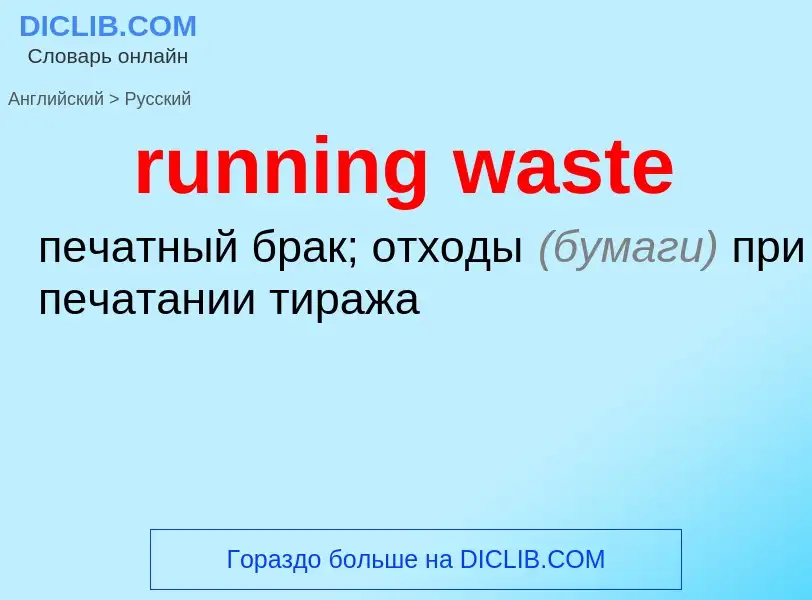Translation and analysis of words by ChatGPT artificial intelligence
On this page you can get a detailed analysis of a word or phrase, produced by the best artificial intelligence technology to date:
- how the word is used
- frequency of use
- it is used more often in oral or written speech
- word translation options
- usage examples (several phrases with translation)
- etymology
running waste - translation to russian
общая лексика
обегающий
Wikipedia
Waste minimisation is a set of processes and practices intended to reduce the amount of waste produced. By reducing or eliminating the generation of harmful and persistent wastes, waste minimisation supports efforts to promote a more sustainable society. Waste minimisation involves redesigning products and processes and/or changing societal patterns of consumption and production.
The most environmentally resourceful, economically efficient, and cost effective way to manage waste often is to not have to address the problem in the first place. Managers see waste minimisation as a primary focus for most waste management strategies. Proper waste treatment and disposal can require a significant amount of time and resources; therefore, the benefits of waste minimisation can be considerable if carried out in an effective, safe and sustainable manner.
Traditional waste management focuses on processing waste after it is created, concentrating on re-use, recycling, and waste-to-energy conversion. Waste minimisation involves efforts to avoid creating the waste during manufacturing. To effectively implement waste minimisation the manager requires knowledge of the production process, cradle-to-grave analysis (the tracking of materials from their extraction to their return to earth) and details of the composition of the waste.
The main sources of waste vary from country to country. In the UK, most waste comes from the construction and demolition of buildings, followed by mining and quarrying, industry and commerce. Household waste constitutes a relatively small proportion of all waste. Industrial waste is often tied to requirements in the supply chain. For example, a company handling a product may insist that it should be shipped using particular packing because it fits downstream needs.

.jpg?width=200)



![Maximum human speed [km/h] and pace [min/km] per distance Maximum human speed [km/h] and pace [min/km] per distance](https://commons.wikimedia.org/wiki/Special:FilePath/Human speed distance portrait.png?width=200)
![A scene depicting long-distance runners, originally found on a [[Panathenaic amphora]] from Ancient Greece, circa 333 BCE A scene depicting long-distance runners, originally found on a [[Panathenaic amphora]] from Ancient Greece, circa 333 BCE](https://commons.wikimedia.org/wiki/Special:FilePath/Long Distance Runners, Ancient Greece, Amphora.png?width=200)
![[[Eadweard Muybridge]] photo sequence [[Eadweard Muybridge]] photo sequence](https://commons.wikimedia.org/wiki/Special:FilePath/Muybridge runner.jpg?width=200)
![Roman bronze sculptures]] of runners from the [[Villa of the Papyri]] at [[Herculaneum]], now in the [[Naples National Archaeological Museum]] Roman bronze sculptures]] of runners from the [[Villa of the Papyri]] at [[Herculaneum]], now in the [[Naples National Archaeological Museum]]](https://commons.wikimedia.org/wiki/Special:FilePath/Runners MAN Napoli Inv5626-7 n02.jpg?width=200)
![International-level women athletes competing in 100 m sprint race at [[ISTAF Berlin]], 2006 International-level women athletes competing in 100 m sprint race at [[ISTAF Berlin]], 2006](https://commons.wikimedia.org/wiki/Special:FilePath/Sina Schielke (192) wins the 100 metres race - ISTAF 2006 - Berlin, 3 September.jpg?width=200)
